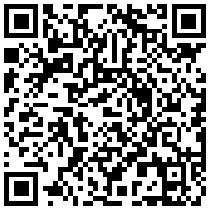Clinical Characteristics of 25 Cases with Primary Vaginal Malignancies in Young Girls
-
摘要:目的 探讨幼少女原发性阴道恶性肿瘤的临床特点、治疗和结局。方法 回顾性分析北京协和医院1980年1月至2015年3月收治的25例经病理确诊的幼少女原发性阴道恶性肿瘤患者的临床病理资料, 总结其临床特点、治疗方法、疗效及结局。结果 患儿年龄为8个月~12岁, 中位年龄11个月。25例患儿中阴道内胚窦瘤16例(64%)、胚胎型横纹肌肉瘤7例(28%)、透明细胞癌2例(8%)。最常见的临床表现为阴道出血或血性分泌物(76%), 其次为阴道口肿物(24%)。所有患儿均行保守手术, 仅1例患儿术后行放射治疗。小儿阴道恶性肿瘤对化疗多敏感, 术后根据组织类型及高危因素, 分别给予PEB(顺铂、依托泊苷、博莱霉素)、PVB(顺铂、长春新碱、博莱霉素)、IVA(异环磷酰胺、长春新碱、更生霉素)或VAC(长春新碱、更生霉素、环磷酰胺)等方案化疗。中位随访时间44个月(6个月~18年), 22例存活, 生存率88%;3例患儿(1例胚胎型横纹肌肉瘤, 2例透明细胞癌)死于疾病进展, 病死率为12%, 复发和死亡大多发生在治疗后2年内。结论 幼少女原发性阴道恶性肿瘤极为罕见, 内胚窦瘤是阴道最常见的恶性肿瘤, 其次为胚胎型横纹肌肉瘤和透明细胞癌。阴道内胚窦瘤和胚胎型横纹肌肉瘤多对化疗敏感, 治疗以联合化疗为主, 预后较好。阴道透明细胞癌对化疗不敏感, 治疗以手术切除和放疗为主, 预后较差。早期发现、早期治疗是提高生存率的关键。Abstract:Objective To analyze the clinical characteristics, treatment, and outcomes of children with primary vaginal malignancies.Methods We conducted a retrospective analysis on clinical and pathological data of all children with pathologically confirmed primary vaginal malignancies treated at Peking Union Medical College Hospital between January 1980 and March 2015. The clinical characteristics, therapeutic methods, treatment effect, and outcomes of the children were summarized.Results Twenty-five patients (median age, 11 months; range, 8 months to 12 years) were identified, including 16 (64%) endodermal sinus tumor (EST), 7 (28%) embryonal rhabdomyosarcoma (ERMS), and 2 (8%) clear-cell adenocarcinoma (CCA). Bleeding or blood-tinged discharge was the most common clinical presentation (76%), followed by a protruding mass (24%). All patients were performed conservative surgery. Only one patient received radiotherapy. Childhood genital malignancies were generally sensitive to chemotherapy.According to the histological type and high risk factors, different chemotherapy regimens were administrated after surgery, such as PEB (cisplatin, etoposide, bleomycin), PVB (cisplatin, vincristine, bleomycin), IVA (ifosfamide, vincristine, actinomycin), or VAC (vincristine, actinomycin, cyclophosphamide). The patients were followed up for a median of 44 months (range, 6 months to 18 years). Twenty-two patients (88%) remained alive. Three patients (12%) died of disease progression (1 ERMS, and 2 CCA). Recurrence and death occurred mostly in the first two years after treatment.Conclusions Vaginal primary malignancies are extremely rare in children, among which EST is the most common type, followed by ERMS and CCA. EST and ERMS at the vagina are sensitive to chemotherapy, therefore the main therapeutic method is combined chemotherapy, and the prognosis is good. CCA is not sensitive to chemotherapy, thus the main therapeutic methods are surgery and radiotherapy, and the prognosis is poor. Early recognition of symptoms and early treatment is the key to improve survival.
-
Keywords:
- vaginal malignancies /
- young girls /
- clinical characteristics /
- prognosis
-
妇科肿瘤在儿童中比较少见,在小儿肿瘤中所占比例不到5%[1]。原发性阴道恶性肿瘤是一种罕见病,约占妇科恶性肿瘤的2%,在幼少女中则更罕见。阴道恶性肿瘤临床表现多样,包括腹痛、腹部包块、慢性生殖道溃疡、阴道出血或阴道肿物。组织活检可明确诊断,分期主要看肿瘤范围、淋巴结转移等。20世纪70年代及80年代初期,小儿阴道恶性肿瘤的治疗以根治性手术为主,近30年来已逐渐演变为新辅助化疗联合保守手术或放疗的治疗模式[2-4]。本文回顾性分析了本院近30余年来收治的25例幼少女原发性阴道恶性肿瘤患者的临床资料,着重探讨其临床特点、治疗和结局。
资料和方法
临床资料
回顾性分析1980年1月至2015年3月在北京协和医院就诊的25例年龄小于18岁的原发性阴道恶性肿瘤患者的临床病理资料。其中20例为本院初治患者,5例为外院手术和(或)化疗后转入本院。所有患者均经定期的门诊随诊或电话进行随访。
诊断标准与分期
所有患者的诊断均依据阴道肿物取材或阴道脱落肿物病理检查结果,病理诊断由两个病理科医师核实。横纹肌肉瘤手术/病理分组系统依据国际横纹肌肉瘤协作组(Intergroup Rhabdomyosarcoma Studies Group,IRSG)的标准[5],即IRS-Ⅰ组:局部病变完全切除,手术切缘无镜下残留,且无区域淋巴结侵犯;IRS-Ⅱ组:局部病变肉眼切除,镜下切缘阳性和(或)区域淋巴结侵犯;IRS-Ⅲ组:局部病变部分切除伴肉眼残留,如切除部分肿瘤取活检或原发肿瘤肉眼切除大于50%;IRS-Ⅳ组:诊断时出现远处转移。
治疗方法
采取以化疗为主的治疗,化疗方案取决于肿瘤的组织学类型。内胚窦瘤采用PEB(顺铂、依托泊苷、博莱霉素)、PEV(顺铂、依托泊苷、长春新碱)或PVB(顺铂、长春新碱、博莱霉素)方案,以PEB方案为主。横纹肌肉瘤则采用IVA(异环磷酰胺、长春新碱、更生霉素)、VAC(长春新碱、更生霉素、环磷酰胺)、VCE(长春新碱、卡铂、依托泊苷)、IVE(异环磷酰胺、长春新碱、依托泊苷)、AVCP(阿霉素、长春新碱、环磷酰胺、顺铂)或CEV(卡铂、表阿霉素、长春新碱)方案化疗,以IVA方案为主。常用化疗方案见表 1。
表 1 原发性阴道恶性肿瘤常用化疗方案方案 药物 剂量 用药方法及时间 疗程 PEB 顺铂 30 mg/(m2·d) 静脉滴注,d1、d2、d3 每3周一疗程 依托泊苷 100 mg/(m2·d) 静脉滴注,d1、d2、d3 博莱霉素/平阳霉素 15 mg/(m2·d) 肌内注射,d2、d9、d16 PVB 顺铂 30 mg/(m2·d) 静脉滴注,d1、d2、d3 每3周一疗程 长春新碱 1~1.5 mg/(m2·d) 静脉滴注,d1、d2 博莱霉素/平阳霉素 15 mg/(m2·d) 肌内注射,d2、d9、d16 IVA* 异环磷酰胺 3.0g/(m2·d) 静脉滴注,d1、d2、d3 每3周一疗程 长春新碱 1~1.5 mg/(m2·d) 静脉滴注,d1、d8、d15 更生霉素 1.5mg/(m2·d) 肌内注射,d1 VAC 长春新碱 1~1.5 mg/(m2·d) 静脉滴注,d1、d8、d15 每3周一疗程 更生霉素 0.015mg/(kg·d) 静脉滴注,d1~d5 环磷酰胺 2.2 mg/(m2·d) 静脉滴注,d1 VCE 长春新碱 1~1.5 mg/(m2·d) 静脉滴注,d1 每3周一疗程 卡铂 600mg/(m2·d) 静脉滴注,d1~d5 依托泊苷 150mg/(m2·d) 静脉滴注,d1 *IVA 4程后进行评估,再进行巩固化疗;博莱霉素终生剂量250 mg/m2 结果
一般情况
所有患儿就诊时外观发育均正常。24例患儿为足月分娩,孕期平顺;1例患儿为32周双胎之一,早产,体重为1850 g。所有患儿的母亲孕前、孕期均无激素暴露史,孕期无毒物或放射线接触史。1例患儿合并先天左肾发育不良,左输尿管异位开口于子宫,其他患儿无特殊。
发病情况
在本院就诊的年龄小于18岁的原发性阴道恶性肿瘤患者占同时期原发性阴道恶性肿瘤患者的14.6%(25/171)。其中阴道内胚窦瘤16例(64%)、胚胎型横纹肌肉瘤7例(28%)、透明细胞癌2例(8%)。1980年至1999年20年间共诊治4例小儿阴道原发性恶性肿瘤,其中1990年至1995年间仅诊治1例;2000年至2009年10年间诊治5例;近5年来诊治16例患者,收治患者人数呈递增趋势。
发病年龄
患儿就诊时年龄为8个月~12岁,中位年龄11个月。其中小于3岁者23例,占92%。16例阴道内胚窦瘤均发生于婴幼儿期,其中11例(68.8%)发生于婴儿期,5例(31.2%)发生于幼儿期。7例胚胎型横纹肌肉瘤患者年龄为8个月~3岁,中位年龄22个月。2例阴道透明细胞癌发生于儿童期,年龄分别为9岁和12岁,中位年龄10.5岁。
临床表现
以不规则阴道出血就诊的患者19例(76%),以阴道口肿物就诊者共6例(24%)。阴道内胚窦瘤患者和透明细胞癌患者首发症状均为阴道出血,其中1例透明细胞癌患者合并“先天左肾、子宫发育不良,左输尿管异位开口于子宫”;6例横纹肌肉瘤患者首发症状为阴道口肿物(85.7%),1例患者阴道不规则出血40余天后发现阴道口肿物而就诊。
辅助检查
所有内胚窦瘤患者均有血清甲胎蛋白(α-fetoprotein,AFP)的升高,AFP最高者达54 000 g/L;部分患者B超可见不均质低回声,CT检查可见阴道内软组织密度影,阻塞阴道。横纹肌肉瘤无特异性升高的肿瘤标志物,偶可见神经元特异性烯醇化酶轻度升高,7例患者术前均行影像学检查,5例患者B超检查发现不均质低回声团块,2例患者影像学检查未发现明显异常。1例合并先天左肾发育不良的透明细胞癌患者术前B超和磁共振成像检查示先天子宫发育不良,子宫血管瘤;另1例患者术前B超检查发现盆腔内肿大的淋巴结。
治疗方法及临床转归
阴道内胚窦瘤:本院初治14例患儿,其中11例患儿给予4~6个疗程的PEB方案化疗,平均化疗4.8程,2~3程后AFP降至正常;3例患儿联合使用PEB、PVB、PEV或VAC方案化疗,6~9个疗程,AFP也在2~3程后降至正常,均获完全缓解。1例侵及膀胱肌层的患儿,外院手术及PEB化疗达完全缓解后8年,因周期性下腹痛3月、宫腔积液及后天性宫颈闭锁来本院就诊,于本院行子宫阴道贯通术。另1例患儿外院治疗达完全缓解后的2年内,于外院行5次阴道内赘生物切除,病理均为肉芽组织,因阴道内肉芽组织反复生长及左卵巢囊肿来本院就诊,本院行腹腔镜下卵巢囊肿剔除及阴道内肿物切除术,病理示阴道肉芽组织和左卵巢浆黏液性囊腺瘤。
胚胎型横纹肌肉瘤:依据IRS分类,7例横纹肌肉瘤患儿均属于IRS-Ⅲ组。5例为本院初治,其中2例IVA化疗4程,VCE巩固化疗2程,目前均无瘤生存3年以上;1例VAC化疗12程,现无瘤生存64个月;1例PVB化疗1程,AVCP化疗14周后行阴道肿瘤切除,病理活检阴性后,又给予AVCP巩固化疗3程,但在停化疗1年后,再次复发并死于肿瘤进展;1例正在接受IVA方案化疗。1例外院行AVCP/IVE交替化疗4程后,转入本院,阴道活检示仍有残留退变的瘤细胞,IVA化疗2程后阴道肿物活检阴性,又予2程IVA巩固化疗,现无瘤生存8个月;另1例为疾病进展的患儿,外院IVA化疗4程,停化疗后7月余发现双侧腹股沟肿物,本院手术切除腹股沟肿物,病理示腹股沟淋巴结、血管脂肪组织内见胚胎型横纹肌肉瘤结节,给予IVA/CEV/IVE方案交替化疗4程后,辅助检查可疑心肌受损,将CEV改为IVA方案化疗,共行9程化疗,现无瘤生存12个月。
透明细胞癌:1例患儿合并“先天左肾发育不良、左输尿管异位开口于子宫”,6.5岁时切除左肾,之后不规则阴道出血2年余,外院B超和磁共振成像检查示:先天子宫发育不良,子宫血管瘤,本院阴道肿物活检示阴道后上壁低分化透明细胞癌,但患儿家属拒绝治疗。另1例患儿术前B超检查发现盆腔内肿大的淋巴结,本院行阴道活检、盆腔淋巴结切除,术中行双髂内动脉插管,病理示中分化透明细胞癌、右髂内及闭孔淋巴结转移性透明细胞癌(7/8),手术当日开始给予PVB化疗3程,氟尿嘧啶和顺铂动脉插管内灌注化疗,术后行放射治疗。此2例透明细胞癌患儿均死于疾病进展。
疗效及结局
本院初治的20例患儿中,1例患儿家属放弃治疗,2例患儿仍在治疗,其余17例患儿均获得完全缓解,化疗反应率为100%,但1例横纹肌肉瘤患儿本院治疗达完全缓解,停止化疗1年后复发,未行正规治疗而死于疾病进展。本组25例患者中位随访时间44个月(6个月~18年),3年无瘤生存率为80%,5年无瘤生存率为66.7%。3例患者死于疾病进展,其中1例患者家属放弃治疗,1例为盆腔淋巴结多发转移的晚期病例,另1例为复发后未坚持治疗的患儿,病死率为12%。复发和死亡大多发生在治疗后2年内。
讨论
儿童原发性阴道恶性肿瘤以往大多行根治性手术,包括全阴道切除和盆腔脏器廓清术,使患者失去了性器官、生育功能,甚至直肠的功能,而且治疗效果也不十分理想。近年来,随着有效化疗方案的出现及化疗水平的提高,手术趋于保守[3]。根治性手术比例已从1972年至1978年间的100%下降至1988年至1996年间的13%[1]。本组患者均未行根治性手术,通过病理明确诊断后,即行持续有效的化疗。化疗被认为是当前治疗幼少女生殖道恶性肿瘤最为有效的方法。与手术和放疗相比,化疗在保留生育器官方面更具优势,更适于治疗儿童生殖道恶性肿瘤。
有文献报道横纹肌肉瘤是最常见的儿童阴道恶性肿瘤,其次为生殖细胞肿瘤和透明细胞腺癌[6]。本组病例显示生殖细胞肿瘤(内胚窦瘤)最常见,其次是横纹肌肉瘤和透明细胞癌。这可能与种族、地域差异、环境、遗传变异等因素有关。
内胚窦瘤是来源于原始生殖细胞的一种高度恶性肿瘤,可发生于卵巢、外阴、阴道、宫颈,多发生于卵巢,其次为阴道。国际文献报道发生于阴道者尚不足100例[7],发生于幼少女阴道者则更少见。本组资料显示其主要发生于小于3岁的婴幼儿,与国内外文献报道相似[1, 8-9]。国内文献报道患儿年龄最小者为出生后20 d[10]。早期病例可无症状,随着疾病的发展,可出现无痛性异常阴道出血、尿布血染或异常阴道排液。阴道不规则出血是其最常见症状,其次为阴道肿物,本组患者中首发症状均为阴道出血。肿瘤呈息肉状或葡萄状肿物。该肿瘤对化疗十分敏感,化疗以一线方案PEB或PVB为主,辅以保守手术治疗[3]。本组资料显示化疗反应率100%。内胚窦瘤对放疗不敏感。对于晚期病例,先联合化疗,待肿瘤缩小后再施行手术,可提高切除率。对于复发转移的患者,手术切除病灶后,再次化疗也可取得疗效。瘤细胞可产生AFP,患者血清中能测出较高浓度的AFP,其浓度与肿瘤的消长相平行,成为诊断及治疗监测的重要标志物。对经手术及化疗等治疗后AFP转阴的病例,无需行二次探查术。
2002年版世界卫生组织软组织和骨肿瘤分类将横纹肌肉瘤分为3个亚型即胚胎型、腺泡状和多形性。胚胎型横纹肌肉瘤(葡萄状肉瘤)是最常见的亚型,占儿童的60%~70%,常发生于头颈部和泌尿生殖道。在本组病例中,7例均为胚胎型横纹肌肉瘤,高于文献报道[1]。该病发病年龄范围较广,为1个月~12.5岁,中位年龄3.7岁[7]。临床表现以阴道肿物最常见,其次是不规则阴道出血。本组资料显示胚胎型横纹肌肉瘤对化疗敏感,不需要最初施行根治性手术,保守的外科治疗配合根治剂量的化疗已经显示出很好的生存率,因此保守手术后实施化疗是可行的。目前常用的化疗方案有美国横纹肌肉瘤协会的VAC方案[11]和欧洲横纹肌肉瘤协会的IVA方案[12]。两个方案疗效相似,VAC方案治疗时间较长,但毒副作用小;IVA方案治疗时间短,但毒副作用大。本组横纹肌肉瘤的治疗以IVA方案为主,4程化疗后评估,再予VCE巩固化疗2程[4, 13]。治疗过程中根据病情需要也可辅以放疗[14-15],但由于放疗对卵巢功能可产生潜在的损伤,本组患者中的家属均不同意接受放疗。
阴道透明细胞癌是阴道腺癌的一种特殊组织类型,好发部位为阴道上段前壁及侧壁,组织来源为副中肾管及残存于阴道壁浅层的腺组织。原发性阴道透明细胞癌并不多见,病因不清,多在青春期发病,其发生多与非甾体雌激素的使用有关。目前尚未见6岁以下儿童患者的报道。本组资料中的2例患儿青春期发病,均无孕期非甾体雌激素的暴露史,1例患儿合并先天左肾发育不良,提示该病可能与先天泌尿生殖道发育异常有关,该例情况与文献报道相似[16]。该病以阴道不规则流血为主要临床表现。青少年患者病情进展快,有早期复发及转移的特点,预后差[1]。文献报道局部病灶及盆腔和腹主动脉旁淋巴结切除有重要的治疗作用[17],即使对于早期患者也建议行淋巴结切除[18]。新辅助化疗的作用尚不明确,文献报道联合使用铂类和紫杉醇成功治疗患者1例[19]。透明细胞癌对放疗敏感,放疗联合同步铂类为主的化疗效果较好[20]。对于镜下有残留病灶或淋巴结转移的患者建议术后放疗,同时行双侧卵巢悬吊固定[18]。年轻、晚期患者辅以化疗可提高生存率及保留卵巢的功能,但单纯化疗不能治愈本病[21]。
幼少女阴道出血为一特殊的临床症状,常引起患儿及家长的心理恐慌,加之幼女生殖器官尚未发育,患儿恐惧不合作,影响早期的诊断和治疗。婴幼儿患者可在麻醉下进行妇科检查和可疑病变部位取材活检,根据病理诊断确诊。若无明显病变,应先作阴道涂片进行细胞学检查,然后在阴道镜或宫腔镜下定位活检确诊。青春期不规则阴道出血的少女,经检查未发现异常,而激素治疗1~2疗程效果不佳者,除考虑功血,还应警惕原发性阴道恶性肿瘤的存在,应及时进行阴道细胞涂片或必要的阴道检查[22]。内胚窦瘤与横纹肌肉瘤影像学上较难鉴别,但结合血清AFP检测以及免疫组织化学染色可进行鉴别。
原发性阴道恶性肿瘤的预后与分期、病理类型、组织学分级、病灶部位和治疗方法等相关。近20余年来,随着有效化疗方案的出现及化疗水平的提高,幼少女原发性阴道恶性肿瘤的预后已有明显改善。
在未采用联合化疗的70年代初期及以前,内胚窦瘤的预后极差,2年生存率小于10%,且多属Ia期病例[8]。本组中16例内胚窦瘤患儿,在中位随访48.5个月的时间内生存率达100%,最长随访时间18年。
IRS-Ⅳ研究显示,Ⅰ、Ⅱ、Ⅲ和Ⅳ组横纹肌肉瘤患者的3年无事件生存率(event-free survival,EFS)分别为83%、86%、73%和24%(P<0.001)[23]。本组IRS-Ⅲ组患者3年无瘤生存率为75%,与文献报道相似。文献报道葡萄状肉瘤无瘤生存时间最长者为39年,1例患者12年后死于继发直肠癌[1]。
阴道透明细胞癌Ⅰ期、Ⅱ期、Ⅲ/Ⅳ期患者的2年无瘤生存率分别为90%、71%、29%[18-19]。国内文献报道1例婴儿患者术后存活21年无复发征象,可能与彻底的手术及有效的化疗方案有关[24]。另有文献报道,与孕期雌激素暴露无关的透明细胞癌患者,发病年龄越小,预后越差[25]。肿瘤全部切除的患者预后较好。
本组资料中1例胚胎型横纹肌肉瘤和2例透明细胞癌患儿死于疾病进展,病死率为12%,其中1例由于放弃治疗,1例由于肿瘤处于晚期,另1例则由于复发后未坚持正规治疗而导致,复发和死亡大多发生在治疗后的2年内。因此,患儿病情完全缓解后应坚持长期的定期随诊,不仅要监测疾病有无复发,还要关注化疗药物对小儿性腺的毒副作用,以及继发肿瘤对患儿生命的潜在威胁。
综上,幼少女原发性阴道恶性肿瘤极为罕见,生殖细胞肿瘤是阴道最常见的恶性肿瘤,对化疗十分敏感,PEB、PVB应作为主要的一线化疗方案,检测血清AFP值可监测疗效。阴道横纹肌肉瘤也多对化疗敏感,可以IVA、VAC方案化疗为主,根据情况选择保守手术或放疗。透明细胞癌强调综合治疗,手术切除病灶和淋巴结后,根据病情决定放疗或放疗联合同步化疗。正确的方案、适当的剂量和合理的化疗间隔是化疗能否成功的关键。同时应坚持个体化治疗的原则。早期发现、早期治疗是提高生存率的关键。另外,化疗药物对小儿性腺的毒副作用是妇科肿瘤医生应关注的问题。
-
表 1 原发性阴道恶性肿瘤常用化疗方案
方案 药物 剂量 用药方法及时间 疗程 PEB 顺铂 30 mg/(m2·d) 静脉滴注,d1、d2、d3 每3周一疗程 依托泊苷 100 mg/(m2·d) 静脉滴注,d1、d2、d3 博莱霉素/平阳霉素 15 mg/(m2·d) 肌内注射,d2、d9、d16 PVB 顺铂 30 mg/(m2·d) 静脉滴注,d1、d2、d3 每3周一疗程 长春新碱 1~1.5 mg/(m2·d) 静脉滴注,d1、d2 博莱霉素/平阳霉素 15 mg/(m2·d) 肌内注射,d2、d9、d16 IVA* 异环磷酰胺 3.0g/(m2·d) 静脉滴注,d1、d2、d3 每3周一疗程 长春新碱 1~1.5 mg/(m2·d) 静脉滴注,d1、d8、d15 更生霉素 1.5mg/(m2·d) 肌内注射,d1 VAC 长春新碱 1~1.5 mg/(m2·d) 静脉滴注,d1、d8、d15 每3周一疗程 更生霉素 0.015mg/(kg·d) 静脉滴注,d1~d5 环磷酰胺 2.2 mg/(m2·d) 静脉滴注,d1 VCE 长春新碱 1~1.5 mg/(m2·d) 静脉滴注,d1 每3周一疗程 卡铂 600mg/(m2·d) 静脉滴注,d1~d5 依托泊苷 150mg/(m2·d) 静脉滴注,d1 *IVA 4程后进行评估,再进行巩固化疗;博莱霉素终生剂量250 mg/m2 -
[1] Fernandez-Pineda I, Spunt SL, Parida L, et al. Vaginal tumors in childhood:the experience of St. Jude Children's Research Hospital[J]. J Pediatr Surg, 2011, 46:2071-2075. DOI: 10.1016/j.jpedsurg.2011.05.003
[2] Khunda SS, Al-Omary SK. Vaginal malignancies in childhood and adolescence[J]. J Obstet Gynaecol, 2000, 20:499-503. DOI: 10.1080/014436100434695
[3] Tao T, Yang J, Cao D, et al. Conservative treatment and long-term follow up of endodermal sinus tumor of the vagina[J]. Gynecol Oncol, 2012, 125:358-361. DOI: 10.1016/j.ygyno.2011.12.430
[4] Raney RB, Chintagumpala M, Anderson J, et al. Results of treatment of patients with superficial facial rhabdomyosarcomas on protocols of the Intergroup Rhabdomyosarcoma Study Group (IRSG), 1984-1997[J]. Pediatr Blood Cancer, 2008, 50:958-964. DOI: 10.1002/pbc.21447
[5] Newton WA Jr, Gehan EA, Webber BL, et al. Classification of rhabdomyosarcomas and related sarcomas. Pathologic aspects and proposal for a new classification-an Intergroup Rhabdomyosarcoma Study[J]. Cancer, 1995, 76:1073-1085. DOI: 10.1002/1097-0142(19950915)76:6<1073::AID-CNCR2820760624>3.0.CO;2-L
[6] Hellman K, Silfversward C, Nilsson B, et al. Primary carcinoma of the vagina:factors influencing the age at diagnosis. The Radiumhemmet series 1956-1996[J]. Int J Gynecol Cancer, 2004, 14:491-501. DOI: 10.1111/j.1048-891x.2004.014310.x
[7] Goyal S, Puri A, Mishra K, et al. Endodermal sinus tumor of vagina posing a diagnostic challenge and managed by chemotherapy and novel posterior sagittal surgical approach:lessons learned[J]. J Obstet Gynaecol Res, 2014, 40:632-636. DOI: 10.1111/jog.12182
[8] 刘文旭, 刘唐彬, 谢家伦, 等.婴幼儿阴道内胚窦瘤五例[J].中华小儿外科杂志, 2001, 22:39. http://www.wanfangdata.com.cn/details/detail.do?_type=perio&id=xrwk200101033 [9] Handel LN, Scott SM, Giller RH, et al. New perspectives on therapy for vaginal endodermal sinus tumors[J]. J Urology, 2002, 168:687-690. DOI: 10.1016/S0022-5347(05)64724-6
[10] 杨军英, 靳琳.新生儿阴道内胚窦瘤一例[J].中华妇产科杂志, 1999, 34:427. http://www.wanfangdata.com.cn/details/detail.do?_type=perio&id=zhfck199907022 [11] Hemida R, Goda H, Abdel-Hady el-S, et al. Embryonal rhabdomyosarcoma of the female genital tract:5 years' experience[J]. J Exp Ther Oncol, 2012, 10:135-137. http://europepmc.org/abstract/med/23350353
[12] Stevens MC, Rey A, Bouvet N, et al. Treatment of nonmetastatic rhabdomyosarcoma in childhood and adolescence:third study of the International Society of Paediatric Oncology-SIOP Malignant Mesenchymal Tumor 89[J]. J Clin Oncol, 2005, 23:2618-2628. DOI: 10.1200/JCO.2005.08.130
[13] Burke M, Anderson JR, Kao SC, et al. Assessment of response to induction therapy and its influence on 5-year failure-free survival in group Ⅲ rhabdomyosarcoma:the Intergroup Rhabdomyosarcoma Study-Ⅳ experience-a report from the Soft Tissue Sarcoma Committee of the Children's Oncology Group[J]. J Clin Oncol, 2007, 25:4909-4913. DOI: 10.1200/JCO.2006.10.4257
[14] Arndt CA, Donaldson SS, Anderson JR, et al. What constitutes optimal therapy for patients with rhabdomyosarcoma of the female genital tract?[J]. Cancer, 2001, 91:2454-2468. DOI: 10.1002/1097-0142(20010615)91:12<2454::AID-CNCR1281>3.0.CO;2-C
[15] Hathout L, Cohn J, Voros L, et al. High-dose-rate brachytherapy for vaginal rhabdomyosarcoma using a personalized mold in a 20-month old patient[J]. Pediatr Blood Cancer, 2015, 62:531-532. DOI: 10.1002/pbc.25252
[16] Uehara T, Onda T, Sasajima Y, et al. A case of vaginal clear cell adenocarcinoma complicated with congenital anomalies of the genitourinary tract and metanephric remnant without prenatal diethylstilbestrol exposure[J]. J Obstet Gynaecol Res, 2010, 36:681-685. DOI: 10.1111/j.1447-0756.2010.01178.x
[17] Hicks ML, Piver MS. Conservative surgery plus adjuvant therapy for vulvovaginal rhabdomyosarcoma, diethylstilbestrol clear cell adenocarcinoma of the vagina, and unilateral germ cell tumors of the ovary[J]. Obstet Gynecol Clin North Am, 1992, 19:219-233. http://www.ncbi.nlm.nih.gov/pubmed/1316595
[18] McNall RY, Nowicki PD, Miller B, et al. Adenocarcinoma of the cervix and vagina in pediatric patients[J]. Pediatr Blood Cancer, 2004, 43:289-294. DOI: 10.1002/pbc.20113
[19] Duenas-Gonzalez A, Lopez-Graniel C, Gonzalez-Enciso A, et al. A phase Ⅱ study of multimodality treatment for locally advanced cervical cancer:neoadjuvant carboplatin and paclitaxel followed by radical hysterectomy and adjuvant cisplatin chemoradiation[J]. Ann Oncol, 2003, 14:1278-1284. DOI: 10.1093/annonc/mdg333
[20] Ansari DO, Horowitz IR, Katzenstein HM, et al. Successful treatment of an adolescent with locally advanced cervicovaginal clear cell adenocarcinoma using definitive chemotherapy and radiotherapy[J]. J Pediatr Hematol Oncol, 2012, 34:e174-e176. DOI: 10.1097/MPH.0b013e318257dc91
[21] 曾四元, 李诚信, 钟传庆, 等.阴道透明细胞癌12例临床分析[J].实用癌症杂志, 2001, 16:209-210. http://www.wanfangdata.com.cn/details/detail.do?_type=perio&id=syazzz200102038 [22] 敬晓涛, 顾林莉.阴道透明细胞癌误诊青春期功血1例[J].云南医药, 1999, 20:237-238. http://www.cnki.com.cn/Article/CJFDTotal-YNYY903.080.htm [23] Crist WM, Anderson JR, Meza JL, et al. Intergroup rhabdomyosarcoma study-Ⅳ:results for patients with nonmetastatic disease[J]. J Clin Oncol, 2001, 19:3091-3102. DOI: 10.1200/JCO.2001.19.12.3091
[24] 宫新启, 尤金枝, 吴光明, 等.婴儿阴道透明细胞癌术后存活21年一例[J].中华妇产科杂志, 1996, 31:760. http://www.wanfangdata.com.cn/details/detail.do?_type=perio&id=zhfck199612124 [25] Mufti ST, Ali HH. Non-diethylstilbestrol-associated primary clear cell carcinoma of the vagina:two case reports with immunohistochemical studies and literature review[J]. Iran J Med Sci, 2014, 39:298-303. http://www.zhangqiaokeyan.com/academic-journal-foreign-pmc_iranian-journal-medical-sciences_thesis/04000910518.html
-
期刊类型引用(4)
1. 马巧玉. 会阴血管畸形及阴道卵黄囊瘤致幼女阴道出血2例. 中国计划生育和妇产科. 2025(03): 110-112 .  百度学术
百度学术
2. 乔蕾. 宫腔镜行幼女阴道异物检查及治疗的临床价值. 中国现代医生. 2022(15): 48-50+54 .  百度学术
百度学术
3. 刘春英,刘莲花,王玺皓,赖华,贺明礼. 幼儿阴道横纹肌肉瘤1例并幼少女阴道恶性肿瘤文献复习. 中国临床医学影像杂志. 2021(06): 452-453 .  百度学术
百度学术
4. 王涛,曹冬焱,俞梅,张颖,刘巍,宋红梅,沈铿,郭丽娜,杨佳欣. 幼女原发性阴道内胚窦瘤21例临床分析. 山东大学学报(医学版). 2018(05): 41-45 .  百度学术
百度学术
其他类型引用(1)
计量
- 文章访问数: 244
- HTML全文浏览量: 81
- PDF下载量: 8
- 被引次数: 5

 作者投稿
作者投稿 专家审稿
专家审稿 编辑办公
编辑办公 邮件订阅
邮件订阅 RSS
RSS

 下载:
下载:











